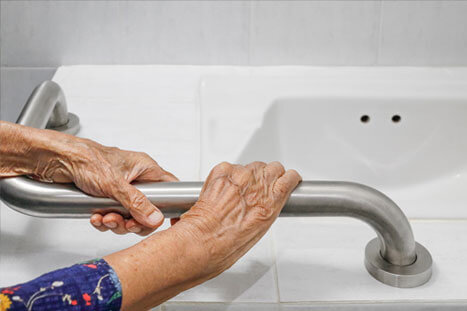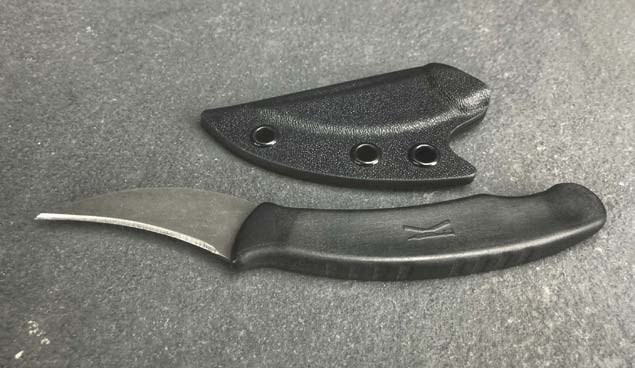
Among many laws in military law is the SROE which outlines the principle that military self defense can be extended to unit self defense. Self defense is also mentioned in the ICRC Commentary on Additional Protocols. Read our articles if you have any questions about military self defense. We'll go over the basics, and answer some common queries. You will also learn about the limitations of military defense. You'll then be prepared to defend yourself.
SROE describes self-defense as an extension on unit self defense
The SROE or standard rules for engagement defines national or military self-defense as an extension or unit-based defense. The SROE was established to assist commanders in exercising national and international self-defense. However, national self defense has been confused with individual self protection under criminal law. This change coincided with the US entering several non-international armed conflicts, leaving the US military with an unclear and often conflicting self-defense landscape.
A threat is considered imminent in the SROE if a person demonstrates hostile intention. However, a threat does not have to be immediate or even imminent in order to trigger self-defense. Unlike criminal legislation, the SROE uses a set of common definitions to define national, unit, and personal self-defense. The SROE also identifies a triggering event as a hostile or demonstrative of hostile intent.

ICRC Commentary for the Additional Protocols mentions selfdefense
The ICRC Commentary for the Additional Protocol says that anyone engaged in hostilities must treat all civilians within its custody with humane care, including those who are wounded. The article prohibits use of force against civilians. Furthermore, it sets strict standards for the treatment of hostages or prisoners of war. It also requires that attacks on civilians be proportionate. This means that incidental and collateral injury cannot outweigh the concrete and direct military benefits. Furthermore, targets must be reasonable in assuming civilian safety and security.
Articles of the Additional Protocols are civilian-protection provisions that have a wider meaning. These provisions are applicable to structures like bridges, power plants and chemical factories. Some structures might be civilian-protected while others may not. Although the ICRC Commentary to Additional Protocols doesn't mention it in this context, a civilian-protected building could be an example civilian-defense measure.
ICRC Commentary
The ICRC just released an Interpretive Guidance regarding military self defense. This will change the nature a cross-border war to how the territorial state consents to force. However, this Commentary also reveals a flaw. First, it isn't legally binding. Only state practices and agreements can make a law binding. This Interpretive Guidance was created by the tireless efforts and expertise of the ICRC. It is a normative paradigm describing how to approach situations like these.

The ICRC initially believed that an armed attack against civilians on the territory a state's territory does not necessarily amount to an act of war. However, the Commentary now concludes that the 1958 interpretation was too narrow. It does not require a state to intervene during a conflict. The IAC does not allow for military action against civilians. But, the ICRC believes there is an armed conflict when one country uses force against another. That means that armed force may be necessary to protect civilians.
FAQ
What Is The Best Workout For Men Over 40?
Older men will find that the best workouts give them more energy as well as improve their stamina.
It is important that you note that people over 40 experience a decrease in testosterone levels, which results in lower sex drive.
You can still exercise, however. Numerous studies have shown that aerobic exercise can increase testosterone levels in certain men.
Aerobics can be a good way to improve your sexual performance.
Is cardio exercise good for your health or bad?
Cardiovascular exercise can have many benefits. It improves blood circulation, strengthens your heart muscle, increases stamina, helps you lose weight, and gives you energy.
Cardiovascular exercise includes running, biking, hiking, swimming, tennis, basketball, soccer, volleyball, football, etc.
Cardio exercises should not be done at high intensity. This could cause injury.
The cardiovascular exercise should only be performed if you feel good.
Don't push yourself beyond what you can handle. You could injure yourself if you do.
When you engage in cardiovascular exercise, it is best to warm up first. Gradually increase the intensity.
You must always listen to what your body is telling you. If you feel pain during cardiovascular exercise, stop immediately.
After a cardio workout, it is a good idea to take a break. This will allow your muscles to rest.
Cardiovascular exercise is a great way to lose weight.
It is the most efficient way to lose weight and stomach fat.
Can I consume alcohol while working out?
Yes. Alcohol increases energy expenditure, speeds up recovery times, and reduces soreness.
Additionally, alcohol can increase insulin sensitivity and make it easier to absorb glucose.
Alcohol can cause dehydration. This can slow down your metabolism. It can also decrease testosterone production, which can affect muscle-building ability.
This is why women shouldn't have alcoholic drinks before exercising. Women who drink heavily should wait at LEAST 24 hours before they start working out.
Breastfeeding women should stay away from alcohol.
Men should only consume one drink per day.
Which dietary supplements are good for weight loss.
It is important to exercise and eat right in order to lose weight. Some people find that certain supplements are helpful.
Research suggests that omega-3 fats may aid in weight loss. Omega-3s are essential fats that are important for brain function and cell membrane integrity. These fats are found in seafood such as salmon, tuna and shrimp.
Another study suggests that green-tea might help with weight loss. The antioxidants in green tea, catechins and other compounds may increase metabolism and promote weight loss.
What kind of food should I avoid when trying to lose weight?
Avoid trans fats. Trans fats can raise LDL (the unhealthy) cholesterol levels while lowering HDL levels (the good).
Trans fats are commonly found in fast food, deep-fried and packaged baked goods as well snack cakes and other processed foods.
These unhealthy fats cause inflammation which leads to heart disease, diabetes, and other health problems.
Avoid foods containing artificial sweeteners. Artificial sweeteners have been linked to an increase in cancer risk.
These chemicals are found everywhere, from soft drinks to chewing candy to candy bars to chewing gum. They appear in many other foods, including meat, poultry, fish, and eggs.
Artificial sweeteners include saccharin.
The American Heart Association recommends that these chemicals be avoided as they can damage DNA.
What is the best way lose weight?
Losing weight is easier said than done. Many people give up because they don’t know what else to do.
To lose that extra weight, however, there are simple steps you could take.
First, you must ensure you eat fewer calories than you burn. You can gain weight by eating more calories than your body burns.
The second is to get regular exercise in order burn those calories. You have the option of doing jogging or walking or cycling, as well as dancing.
Third, quit smoking cigarettes and alcohol. These habits lead to a higher intake of calories than usual.
Fourth, you need to cut back on fatty foods and junk food. You can replace them by healthier choices such as fruits, vegetables or lean meats.
Fifth, it is important to make lifestyle changes and develop new habits. It is possible to wake up at 5 AM to go to work, or to be more active before you get to work.
Sixth: You must be disciplined, and you must follow your diet plan.
Finally, you have the option to join a gym and take part in an aerobics session to burn off those extra calories.
These simple tips will help you quickly see results.
Statistics
- Are You One of the 20% of Guys (mh.co.za)
- By John Thompson Take a whopping 38% off a set of PowerBlock Pros. (menshealth.com)
- Cardmembers earn 5% Back at Amazon.com with a Prime Credit Card. (amazon.com)
- Candidates and applicants must pass all four tests at 70% (minimum level) to graduate from Basic Deputy U.S. Marshal (BDUSM) Training. (usmarshals.gov)
- The PRS enabled risk stratification for overall prostate cancer and lethal disease with a four-fold difference between men in the highest and lowest quartiles (HR, 4.32; 95% confidence interval [CI], 3.16-5.89). (pubmed.ncbi.nlm.nih.gov)
External Links
How To
What is the healthiest food for men?
Men should consume five servings of fruits or vegetables per day. They also need to limit red meat consumption and avoid fast foods.
Fruits and veggies are packed with antioxidants that protect against cancer, cardiovascular disease, and other diseases.
Vegetables include broccoli, cauliflower, carrots, spinach, tomatoes, peppers, cucumbers, lettuce, mushrooms, etc.
High in fiber and protein, beans and peas also have high levels of protein.
A great source of omega-3 fatty acid is nuts and seeds. Omega-3 s are essential for brain function and hormone production.
Another good source of omega-3s is fish. Mercury is more abundant in fish than in most other meats. However, fish liver oil does contain fewer toxins.
Normal growth and development are possible with the help of Omega-6s in vegetable oils like soybean, safflowers, sunflowerseed, cottonseed, and corn oils.
Poultry is a good source for lean protein. Chicken breasts are one of the most healthful meats.
Lean beef is low-in saturated fats as well as cholesterol. Avoid eating too many red meats as iron intake can increase the risk of developing prostate cancer.
Avoid sausages and hot dogs. These products can cause cancer by containing nitrates.
No doubt exercise is crucial for good health. Even if you exercise regularly, what do you do? Is there anything else you can do to maintain or improve your physical condition?
The answer is yes! To get the most from your workouts, there are several things you can do. Here are some tips on how to maximize your workout:
Begin slowly. If you try to push yourself too hard during your first session, you may injure yourself. You can start slowly increasing your intensity by starting at a comfortable pace.
Stretch before and afterwards. Stretching can help to loosen tight muscles, decrease soreness, improve flexibility, and reduce pain. You can stretch standing up, sitting down, or walking around.
Cool down. This is especially important for cardio exercises. You need to allow your body time to rest between sessions so that it doesn't get tired. For cooling down, you can walk slowly, take deep breathes, or go for short swim.
Hydrate. Hydration is key to reducing muscle cramps and keeping you hydrated. Water is the ideal drink, but sports drinks can also help.
Healthy eating habits are important. Be sure to eat enough calories each day. Eating regular meals throughout the day will help you stay energized and focused during your workout.
Get rest. If you get adequate sleep, your body will be energized and ready to go for your next workout. Restoring damaged tissue is another important benefit of sleep.